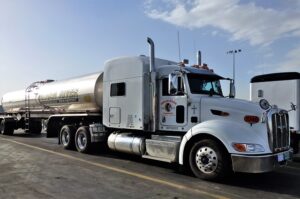After a slump, orders for semi-trucks in the U.S. are rebounding. The increase in sales is a good indicator of the American economy gaining strength. With truck utilization hovering at around 99 percent, transportation companies are purchasing new vehicles to maintain delivery rates. Many companies that make engines and parts are also experiencing a boost in demand. Custom investment casting will be critical to help keep up with this demand and remain competitive.
Factors Driving Growth

As truck companies work to comply with environmental regulations, they’re developing new engines to reduce emissions and increase fuel economy. The alternative use of powertrain technologies, such as fuel cells and hybrid drives, is also becoming more prevalent. Some are also looking to build lighter vehicles and increase interoperability between different-sized trucks, such as the use of mini-containers that light and heavy vehicles can carry and swap.
As the economy becomes more globalized and consumer behaviors change, the need for timely deliveries is on the rise. With life expectancy rates increasing and middle classes shifting in mature and emerging markets, there will be a greater number of trucks on the road. Growth in housing and residential construction is also increasing transport volume, thus increasing the need to transport goods across multiple channels quickly.
In light of the increase in truck demand, original equipment manufacturers face a new set of challenges. They must be novel enough to compete in mature economies and enter high-growth, low-cost markets, which may mean adjusting their product concepts. Investment casting is going to prove beneficial to companies looking to expand their presence, meet demand, develop low-cost vehicle components, and remain competitive.
Investment Casting for the Commercial Vehicle Industry
Investment casting is one of the earliest metal-forming methods in history. The process involves using a newly designed or existing component to create a three-dimensional pattern out of solid wax. An investment casting manufacturer then dips the pattern into slurry, a solution containing a binder and refractory. The contents of the slurry depend on the temperatures the application will use. Lower-temperature melts use a combination of plaster of Paris and silica. Higher-temperature melts may use silica and sillimanite. When the slurry hardens, it creates a mold, or investment.
Once the investment dries, specialists remove the wax by melting it, which they then pour out or vaporize. Workers heat the mold a second time to remove any remaining wax and harden the binders within it. Workers then pour molten metal using pressurized conditions, a vacuum or gravity. When the metal hardens, specialists remove the mold to reveal the automotive components.
 Benefits of Investment Casting for Automotive Components
Benefits of Investment Casting for Automotive Components
- Investment casting allows you to create safety-critical automotive parts in which one must carefully control tensile strength, metallurgy and malleability.
- Investment casting is the technique of choice when creating complex shapes with great dimensional control and accuracy, even when the forms have undercuts.
- Tolerances can be as small as 0.15 percent.
- You may manufacture strong, lightweight dimension parts that have thin walls.
- Steel investment casting and those made of other alloys are great for manufacturing un-machinable components.
- Casted parts have no parting lines or weak joints and welds. They also feature smooth surface finishes.
- You may use a variety of metals and alloys, including those that are difficult to machine or fabricate.
- For short runs, you may replace investment casting with die casting.
- The process greatly reduces human error and labor costs.
With tighter capacity and the increased demand for new trucks, automotive parts manufacturers are poised to help sustain a growing transportation industry using investment castings. Sinotech has more than 20 years of experience creating QS-9000 and ISO-certified investment castings that combine quality and precision without sacrificing affordability. Contact Sinotech today to learn how custom investment casting will help you meet the needs of a growing trucking market.

 Benefits of Investment Casting for Automotive Components
Benefits of Investment Casting for Automotive Components